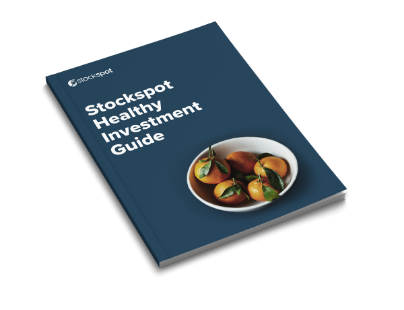Despite political and economic uncertainty overseas, global share ETFs and U.S. share ETFs remain popular with individual and SMSF investors in Australia, wanting international exposure within their investment portfolios.
Over $70 billion is invested in ETFs tracking global shares on the ASX and Cboe Australia, representing more than half of the Australian ETF market.
The largest and most popular ETFs track either a broad global index or the U.S. share market, which is considered to be a proxy for global shares.
Following the success of our ETF Report, we are road testing 12 popular global share ETFs, comparing them across 5 factors before picking our favourites, so you don’t have to.
What are ETFs?
Exchange Traded Funds, or ETFs for short, track a market index rather than taking bets on individual companies.
As they trade less frequently, the costs are much lower than that of a traditional active fund manager, and they also offer transparency and tax efficiency benefits.
ETF investors directly benefit from share capital gains, dividends and franking credits paid by shares contained within an ETF.
The majority of funds compared in this article are index ETFs – only the Magellan fund is an active fund which sits inside an ETF-like listed structure.
We have included the Magellan fund because of its size and popularity, however investors should understand that this is an actively managed fund. We will explain further the difference between active and index investing.
Size
| ASX code | ETF name | Size ($B)* |
| IOO | iShares S&P Global 100 ETF | 4.6 |
| IHOO | iShares S&P Global 100 ETF (AUD Hedged) | 0.6 |
| IVV | iShares S&P 500 ETF | 11.1 |
| IHVV | iShares S&P 500 ETF (AUD Hedged) | 2.7 |
| MGOC | Magellan Global Equities Fund (Managed Fund) | 7.4 |
| MHG | Magellan Global Equities Fund (Managed Fund) (AUD Hedged) | 0.1 |
| VGS | Vanguard MSCI Index International Shares ETF | 11.7 |
| VGAD | Vanguard MSCI Index International Shares ETF (Hedged) | 5.1 |
| WXOZ | SPDR S&P World ex Australian Fund | 0.5 |
| WXHG | SPDR S&P World ex Australian Fund (Hedged) | 0.3 |
| VEU | Vanguard All-World ex US Shares Index ETF | 4.2 |
| VTS | Vanguard US Total Market Shares Index ETF | 5.6 |
^ Magellan Global Fund merged its original listed funds (MGE and MGG) with its unlisted managed fund to form a new structure (MGOC)
There are 8 global share ETFs with over $1 billion under management (IOO, IVV, MGOC, VGS, VGAD, IHVV, VEU and VTS), with the Vanguard MSCI Index International Shares ETF (VSG) regaining its position as the most popular ETF after the S&P 500 ETF (IVV) overtook it at the end of 2024.
The U.S. share market has outperformed other global markets over the last five years so investors have gravitated to this market for their global exposure, although market volatility as a result of President Trumps tariffs may impact the sector’s performance next quarter..
The unhedged global ETFs (IOO, IVV, MGOC, VGS and WXOZ) have drawn in more funds than their hedged equivalents, as a falling Australian dollar has seen unhedged products outperform.
This would suggest that Australian investors are comfortable with the addition of currency diversification when they invest in global shares. A falling Australian dollar has made unhedged ETFs more attractive over the last 3 and 5 years.
Taken collectively, almost $54 billion is invested in the 12 largest global ETFs. For Stockspot Portfolios, we have invested our clients into the S&P Global 100 ETF (IOO).
Our clients also have the option to add the S&P 500 ETF (IVV) for extra US shares or the All-World Ex-US ETF (VEU) for extra non-US shares as part of Stockspot Themes.
Click here to learn more about Stockspot Themes and our specific global ETF bundles.
Costs
| ASX code | ETF name | MER (% p.a.) |
| IOO | iShares S&P Global 100 ETF | 0.40% |
| IHOO | iShares S&P Global 100 ETF (AUD Hedged) | 0.43% |
| IVV | iShares S&P 500 ETF | 0.04% |
| IHVV | iShares S&P 500 ETF (AUD Hedged) | 0.10% |
| MGOC | Magellan Global Equities Fund (Managed Fund) | 1.35% |
| MHG | Magellan Global Equities Fund (Managed Fund) (AUD Hedged) | 1.36% |
| VGS | Vanguard MSCI Index International Shares ETF | 0.18% |
| VGAD | Vanguard MSCI Index International Shares ETF (Hedged) | 0.21% |
| WXOZ | SPDR S&P World ex Australian Fund | 0.07% |
| WXHG | SPDR S&P World ex Australian Fund (Hedged) | 0.10% |
| VEU | Vanguard All-World ex US Shares Index ETF | 0.07% |
| VTS | Vanguard US Total Market Shares Index ETF | 0.03% |
Management fees for this group of ETFs varies widely, from 0.03% for the Vanguard and iShares US share ETFs to 1.36% for the Magellan active fund.
Pricing for index funds has been driven by competition, with new ETFs tending to be launched at a lower price than previously listed similar funds to attract new flows and encourage switching.
The Vanguard products will continue to put fee pressure on iShares and SPDR, particularly where similar Vanguard funds exist.
IOO has higher fees vs VGS although IOO has performed better even on an after-fee basis.
Slippage
| ASX code | ETF name | % spread |
| IOO | iShares S&P Global 100 ETF | 0.04% |
| IHOO | iShares S&P Global 100 ETF (AUD Hedged) | 0.11% |
| IVV | iShares S&P 500 ETF | 0.02% |
| IHVV | iShares S&P 500 ETF (AUD Hedged) | 0.03% |
| MGOC | Magellan Global Equities Fund (Managed Fund) | 0.33% |
| MHG | Magellan Global Equities Fund (Managed Fund) (AUD Hedged) | 0.53% |
| VGS | Vanguard MSCI Index International Shares ETF | 0.02% |
| VGAD | Vanguard MSCI Index International Shares ETF (Hedged) | 0.03% |
| WXOZ | SPDR S&P World ex Australian Fund | 0.13% |
| WXHG | SPDR S&P World ex Australian Fund (Hedged) | 0.23% |
| VEU | Vanguard All-World ex US Shares Index ETF | 0.07% |
| VTS | Vanguard US Total Market Shares Index ETF | 0.04% |
Slippage, more properly known as bid/ask spread, is the difference between bidding price and asking price on the market when you buy an ETF. Typically, a seller earns a small percentage on the value of an ETF when selling, and buying it is known as ‘crossing the spread’.
It has more of an impact if you’re trading an ETF or making regular contributions because you’ll need to cross the spread more often to get invested.
Slippage tends to be higher for global shares ETFs when compared to Australian ETFs since many global markets are closed when the Australian Securities Exchange (ASX) is open, which leads market makers to maintain a wider spread during ASX hours.
IVV and VGS have the lowest slippage at 0.02% closely followed by IHVV and VGAD at 0.03% and VTS and IOO at 0.04%. By comparison, the average Australian Share ETF has a bid/ask spread of 0.05%.
Index ETFs generally have lower slippage than active funds which means investors in index funds aren’t starting as far behind the 8-ball when they invest.
For example, a round-trip of buying, holding and selling the Magellan Global Equities Fund (MGOC) over the last 3 years would have incurred 2 buy-sell spreads plus management fees which totals almost 5% in costs (and that’s before performance fees).
The fund has generated net 3 year returns of almost 18.4% which means that an investor holding for 3 years would have paid over 25% of their net return in costs.
By comparison, an investor in IVV over the same time period would have round-trip costs of less than 0.2% and a net return of 21.4% so would only paid away under 1% of their return in cost.
Think of how much that difference is when considering ETFs and more active funds, as it is a huge difference to pay for access to that market.
IVV has also outperformed Magellan significantly and It shows why active funds management as an industry is much more lucrative for the fund managers than the end investors.
It goes a long way to explaining the title that legendary investor Fred Schwed chose when naming his book, one of the most famous ever written on the stock market: ‘Where Are The Customers’ Yachts?’.
Liquidity
| ASX code | ETF name | Daily Transacted Value ($m) |
| IOO | iShares S&P Global 100 ETF | $6.4 |
| IHOO | iShares S&P Global 100 ETF (AUD Hedged) | $0.5 |
| IVV | iShares S&P 500 ETF | $33.2 |
| IHVV | iShares S&P 500 ETF (AUD Hedged) | $10.1 |
| MGOC | Magellan Global Equities Fund (Managed Fund) | $4.2 |
| MHG | Magellan Global Equities Fund (Managed Fund) (AUD Hedged) | $0.2 |
| VGS | Vanguard MSCI Index International Shares ETF | $20.4 |
| VGAD | Vanguard MSCI Index International Shares ETF (Hedged) | $8.9 |
| WXOZ | SPDR S&P World ex Australian Fund | $0.9 |
| WXHG | SPDR S&P World ex Australian Fund (Hedged) | $0.4 |
| VEU | Vanguard All-World ex US Shares Index ETF | $8.2 |
| VTS | Vanguard US Total Market Shares Index ETF | $9.3 |
Liquidity refers to the amount of turnover (or available turnover) in an ETF. It is measured by average daily volume on the ASX. Volume is a measure of market making activity and trading interest which allows for a reasonable estimate of liquidity.
It is worth mentioning that it may not reflect liquidity in the underlying stocks which is typically much deeper for broad global share ETFs.
However, in times of crisis and during ASX trading hours, investors may not be able to rely exclusively on market makers for liquidity so daily volume is a relevant figure. Liquidity closely matches up with ETF size.
Eight of the largest global shares ETFs we compare turned over more than $1 million dollars worth of volume per day.
Returns
| ASX code | ETF name | 3 Year Total Return (p.a.) |
| IOO | iShares S&P Global 100 ETF | 22.2% |
| IHOO | iShares S&P Global 100 ETF (AUD Hedged) | 17.6% |
| IVV | iShares S&P 500 ETF | 21.4% |
| IHVV | iShares S&P 500 ETF (AUD Hedged) | 17.1% |
| MGOC | Magellan Global Equities Fund (Managed Fund) | 18.4% |
| MHG | Magellan Global Equities Fund (Managed Fund) (AUD Hedged) | 14.1% |
| VGS | Vanguard MSCI Index International Shares ETF | 20.5% |
| VGAD | Vanguard MSCI Index International Shares ETF (Hedged) | 16.7% |
| WXOZ | SPDR S&P World ex Australian Fund | 20.5% |
| WXHG | SPDR S&P World ex Australian Fund (Hedged) | 17.0% |
| VEU | Vanguard All-World ex US Shares Index ETF | 15.9% |
| VTS | Vanguard US Total Market Shares Index ETF | 21.1% |
ETFs with more U.S. share market exposure (IVV, IOO and VTS) have produced the best 3 year returns while the funds with the lowest U.S. exposure (VEU) have performed worse, underperformed only by the Magellan Global Equities Managed Fund, which returned some 8.1% less than best performing ETF IOO.
U.S. shares have had strong 3 and 5 year returns thanks to the performance of shares like Apple (AAPL), Amazon (AMZN), Microsoft (MSFT), Alphabet (GOOG), Berkshire Hathaway (BRKB) and Facebook (FB).
However, the performance of American shares compared to the rest of the world has historically been cyclical, so any outperformance now could well be reversed in the future.
Of the broad global share ETFs without a specific US focus, IOO (22.2%) has performed better than VGS (20.5%) and WXOZ (20.5%) over the last 3 years. The unhedged versions of each of these ETFs have beaten the hedged versions due to the Australian dollar falling over the long term.
The Magellan active fund MHG underperformed most of the broad global ETFs available, and like many other active managers in this space, has underperformed the S&P 500 ETF (IVV).
It shows again why the benefits of active funds management generally skew in favour of the manager rather than the end investor. It’s no wonder 92% of US active fund managers underperformed the index over the last 15 years.
This is the key reason we avoid active funds for our clients. Indexing tends to do better than active management due to investing being a zero sum game.
Why try to beat the house when you can back the house?
Stockspot’s verdict on Global ETFs
Since 2014, we’ve invested on behalf of our clients into the S&P Global 100 ETF (IOO).
The fund invests in the largest 100 companies in the world so provides great diversification across the world’s largest and most successful businesses which are predominantly located in the US, UK, Switzerland, France, Germany, Japan and Korea.
Despite slightly higher fees than other options, this fund’s focus on large companies has been the driver behind IOO outperforming the similar broad global share ETFs: VGS and WXOZ.
This has seen our clients earn 1.7% more p.a over 3 years, by being in IOO rather than WXOZ.
You can see Stockspot Portfolios for more details on the other ETFs inside the portfolios.
Broad global share ETFs
| ASX code | ETF name | 1 Year Total Return (p.a.) | 3 Year Total Return (p.a.) |
| IOO* | iShares S&P Global 100 ETF | 13.0% | 22.2% |
| WXOZ | SPDR S&P World ex Australia Carbon Control Fund | 18.0% | 20.5% |
| VGS | Vanguard MSCI Index International Shares ETF | 17.0% | 20.5% |
We continue to favour IOO for our clients due to its size, track record and exposure to the world’s largest 100 companies.
For clients who want to add extra U.S. shares to their portfolio, we offer the iShares S&P 500 ETF (IVV) which is currently our most popular Stockspot Theme, likely because of its strong recent performance.
For those looking to invest globally but who would prefer to avoid U.S. companies, we offer the Vanguard All-World ex US Shares Index ETF (VEU).
It hasn’t performed as well over 5 years but is more insulated if tech shares or the U.S. economy falter with more even diversification across Japan, the UK, China, France, Germany, Switzerland and Canada.
| ASX code | ETF name | 1 Year Total Return (p.a.) | 3 Year Total Return (p.a.) | 5 Year Total Return (p.a.) |
| IVV* | iShares S&P 500 ETF | 15.2% | 21.4% | 17.8% |
| VEU* | Vanguard All-World ex US Shares Index ETF | 19.4% | 15.9% | 11.6% |
It’s wonderful to see such a broad range of Global ETF options available for Australian investors.
Stockspot will continue to review the global shares ETF universe to ensure our clients get access to the best options available based on our careful analysis.
Watch this video to find out more about global share ETFs.
If you want exposure to global shares as part of a risk aligned, diversified share portfolio without having to do all the research, Stockspot has the answer. Let us take the hassle out of portfolio management so you can enjoy hands off, simple, investing.





